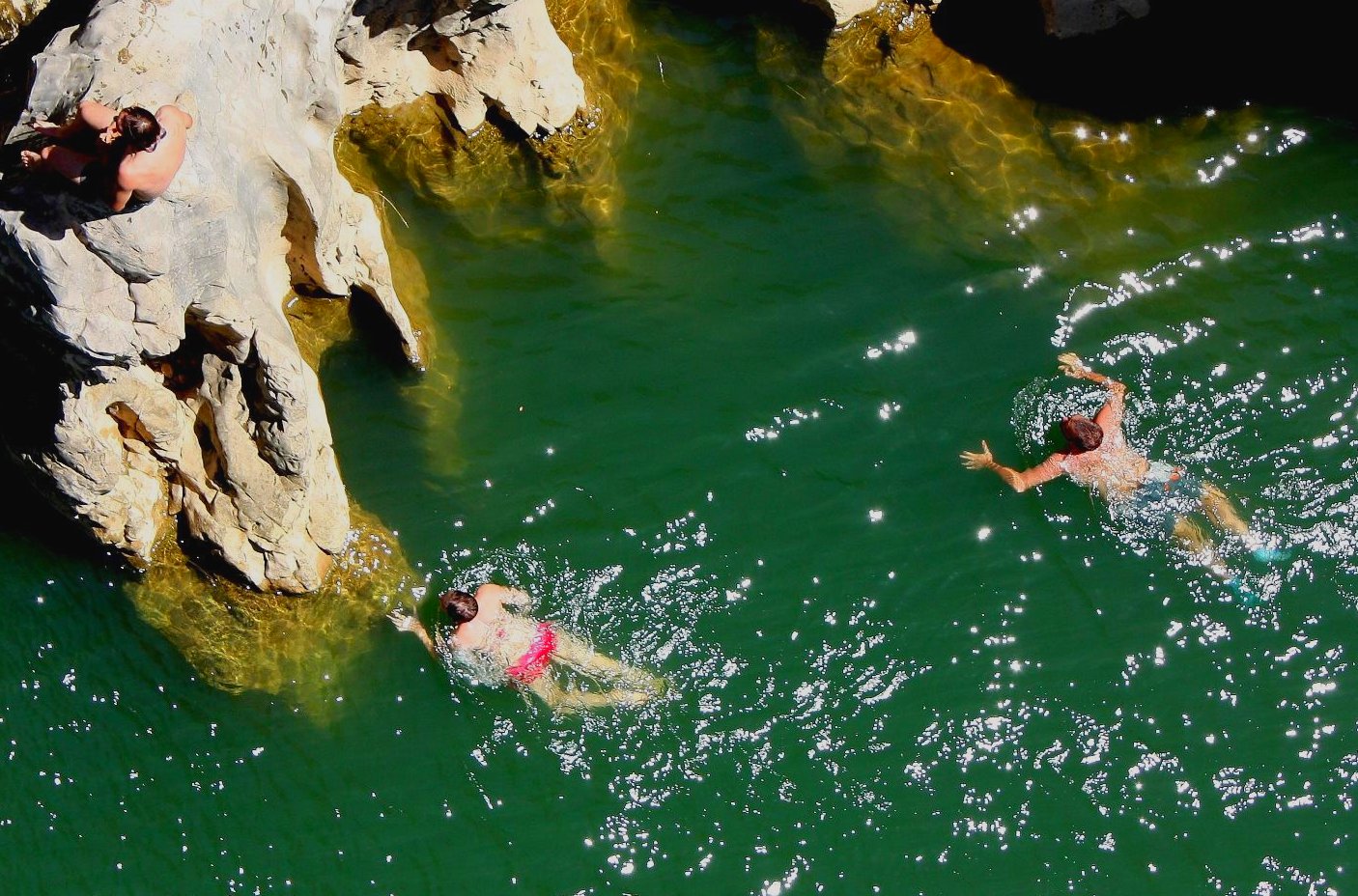
In the heat and sweltering humidity of mid-July 1959 the United Counties Health Unit wrote the final chapter for Cornwall’s most popular swimming hole.
After the Standard-Freeholder reported on complaints from numerous parents that their children had come down with sore throats and developed rashes and body sores after swimming at Silver Bridge, the health unit banned swimming not just at Silver Bridge but the entire canal. This included several other less popular canal swimming spots – Augustus Street Bridge, Roosevelt Bridge behind Howard Smith Paper Mill and Lock 19 near Maple Grove just off old Highway 2. The lock now has a foot bridge.
With the canal no longer used for shipping after the Seaway opened, most of the waterway became stagnant. The canal water was covered with slimy, smelly islands of moss and peppered with debris and garbage.
Health officials warned that the ban would be strictly enforced by city police, which some noted would be easier said than done.
Silver Bridge at the foot of Marlborough Street was part of the old canal system and a summer oasis for hundreds of young and old swimmers. In the Silver Bridge heyday, Cornwall had one public swimming pool, Central Park Pool, later renamed Horovitz Park. It had rules and regulations with set hours. A rope separated the shallow end (about two feet) from the deep end (six feet). Silver
Bridge offered a lot more freedom.
In an editorial, the Standard-Freeholder urged civic officials to come up with a way to transport the displaced swimmers to the new beaches on the Long Sault Parkway.
A stone’s throw away from Silver Bridge were the Bingley Steel dry docks where ships were repaired, boardy bottom, the bywash and lover’s lane. (If Pointe Maligne is ever developed it would be great to name a pathway “Lover’s Lane”.)
In her book “The Friendly Town that Grew”, Eileen Merkley recalled that the “maze of trees, growing in well plotted circles, provided both the brilliance of sunshine and the tranquility of shade which attracted lovers and daydreamers.”
A few years later these pieces of local history and summer memories were literally buried with the filling in of the canal east from Cumberland Street.
Some argue that it was a mistake.
ALSO THIS WEEK IN 1959 – The Ontario government announced an increase in the price of beer. The new price was $4.50 for a case of 24 and $2.25 for 12. Government regulated hotel draught prices were going up to 15 cents from 10 cents for a 10.2 ounce glass while the price of bottled beer in beverage rooms was increased by two cents. Drinkers were getting a break on draught with the 10.2 ounce glass replacing eight ounce glasses. … A gas war that started when three Eamer’s Corners area stations dropped the price for a gallon to 29.9 cents from 37.9 was under way throughout the city. … The $12.5-million expansion at Howard Smith Paper Mill was at the halfway point. The project included installation of the “newest, fastest, largest” fine paper machine in the country. A new woodyard and extension to the finishing department rounded out the expansion. Several houses on Hazel Street were torn down to make room for the paper machine. Many of the displaced residents were employed at the mill and some built homes in what became known as Lakeview Heights. (At the time residents had a view of the lake). … Plans for the Rotary traffic circle on Brookdale Avenue were unveiled. … The Ontario Government Tourist Information Bureau on Second Street West was staffed by Jeanne Scarrow, Carol Dauncey, Micheline Brisson, Myrna Plumley, Sylvia Lanctot and Lillian Ross. … Two cases of polio – a three and four year old – in the city were the first in three years. The health unit announced that several polio innoculation clinics were being set up. … Foundation for the new Iroquois chemical plant in the west end was being poured. … CJSS-TV was expected to be on the air by October. … A Cornwall father, 22, mother, 20, and son, two, were killed in a car accident near Montreal. … The federal government was installing five civil defence sirens in the city. They were designed to warn residents of a nuclear attack by the Soviet Union. … Lakeland Natural Gas Co. was urging city residents to switch to the new source of heating from traditional oil. … Three city physicians – Dr. John McGuire, Dr. Louis Hebert and Dr. George Bateman – were attending the British and Canadian Medical Association Conference in Scotland. … The city passed a bylaw limiting the number of gas stations to 65. … Arthur Villeneuve, 237 Louisa St., snagged a 34-pound muskie in the St. Lawrence River.
HERE AND THERE Polls show that Joe Biden has the best chance of kicking Donald Trump out of the White House. Meanwhile, the contenders who say they want Trump out, are spending a lot of time (and money) trying to destroy Biden. Trump has to being loving it. … Hard to find more slanted (against the accused) coverage of the Const. Daniel Montsion trial than what is being provided by the Ottawa Citizen and CTV Ottawa. … According to recent MSN poll, 76% of Canadians have decided which party they will vote for in October’s federal election. Only 17% are not sure. The rest say they never vote or are not eligible to vote.
TRIVIA This Pitt Street grocery store operated next door to the Bank of Montreal (now the arts centre) from 1937 to the 1960s when it moved to a modern super market on Sydney Street.
TRIVIA ANSWER The experiment with the Pitt Street pedestrian mall – First to Third streets – came to an end when it was re-opened to vehicular traffic on Nov. 9, 1991.
OOPS! Magician Doug Henning once made an elephant disappear. We did one better. We moved a three-storey hotel two city blocks. A mea culpa and explanation: The hotel in last week’s trivia answer was the Lloyd George at Pitt and Water streets. We called it the King George which was at Second and Pitt streets, now the city’s most prominent vacant lot.
SPORTS STUFF Freddie Patek, who played 14 seasons with the Kansas City Royals, was asked during a television interview what it felt like to be the shortest (he was 5-foot-5) player in the Majors. “Better than being the shortest player in the minors,” he answered. … Now that the Blue Jays have a Triple A roster, fans should be charged Triple A prices. … Pro sports teams have come a long way from when the upstart AFL New York Jets signed Joe Namath out of Alabama for the unheard salary of $142,333 a year. At the time, the best paid NFL quarterback was Milt Plum of the
NFL Detroit Lions. He was earning $33,000 a year.
QUOTABLE The only way to get the best of an argument is to avoid it. – Dale Carneige



